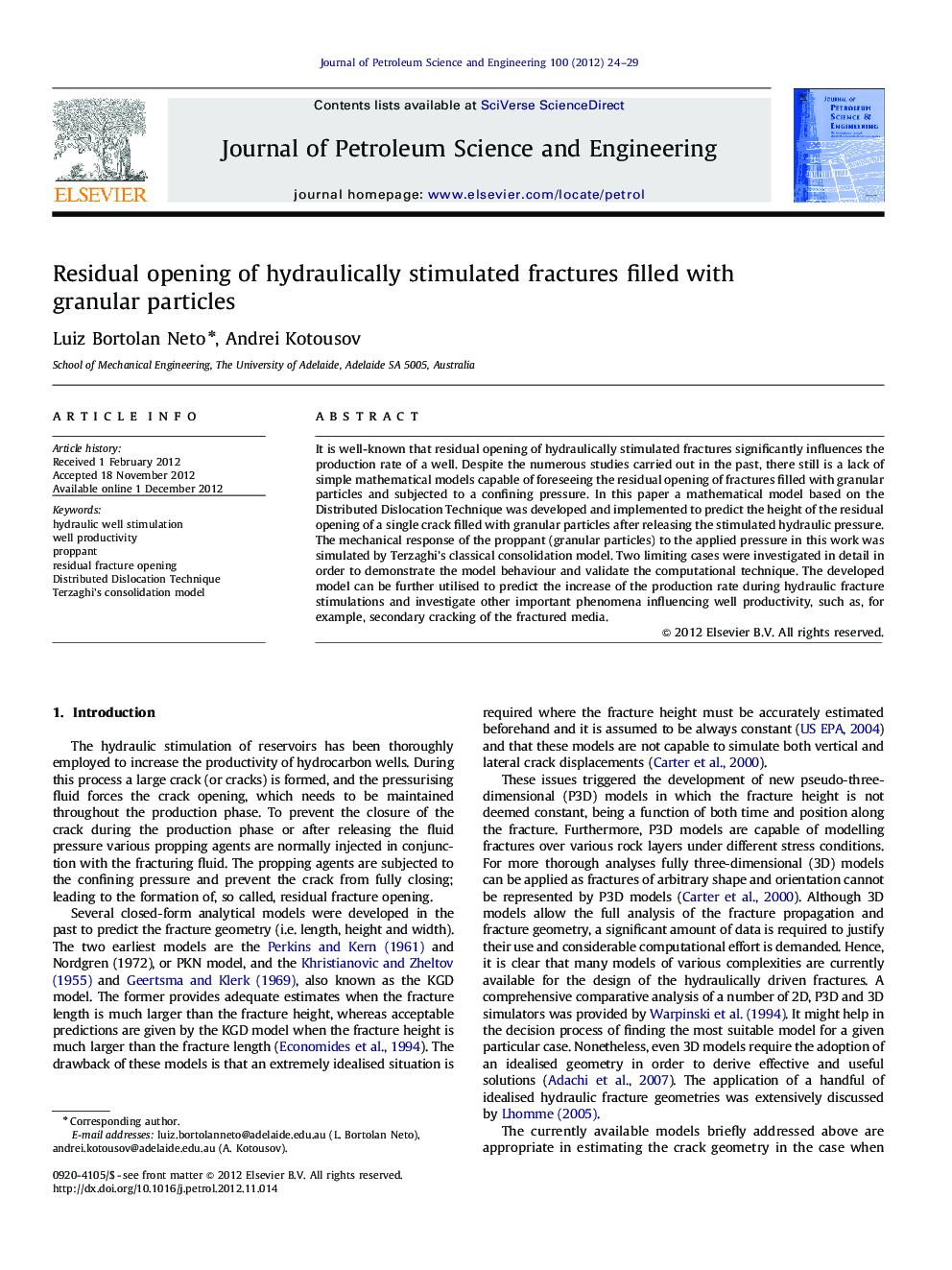| Article ID | Journal | Published Year | Pages | File Type |
|---|---|---|---|---|
| 1755351 | Journal of Petroleum Science and Engineering | 2012 | 6 Pages |
It is well-known that residual opening of hydraulically stimulated fractures significantly influences the production rate of a well. Despite the numerous studies carried out in the past, there still is a lack of simple mathematical models capable of foreseeing the residual opening of fractures filled with granular particles and subjected to a confining pressure. In this paper a mathematical model based on the Distributed Dislocation Technique was developed and implemented to predict the height of the residual opening of a single crack filled with granular particles after releasing the stimulated hydraulic pressure. The mechanical response of the proppant (granular particles) to the applied pressure in this work was simulated by Terzaghi's classical consolidation model. Two limiting cases were investigated in detail in order to demonstrate the model behaviour and validate the computational technique. The developed model can be further utilised to predict the increase of the production rate during hydraulic fracture stimulations and investigate other important phenomena influencing well productivity, such as, for example, secondary cracking of the fractured media.
► Residual opening of hydraulic fractures influences the production rate of a well. ► Lack of simple models capable of foreseeing residual opening of fractures filled with particles. ► Model based on the Distributed Dislocation Technique was developed and implemented. ► It predicts the residual opening of a single crack filled with granular particles. ► Two limiting cases were investigated to validate the developed model.
